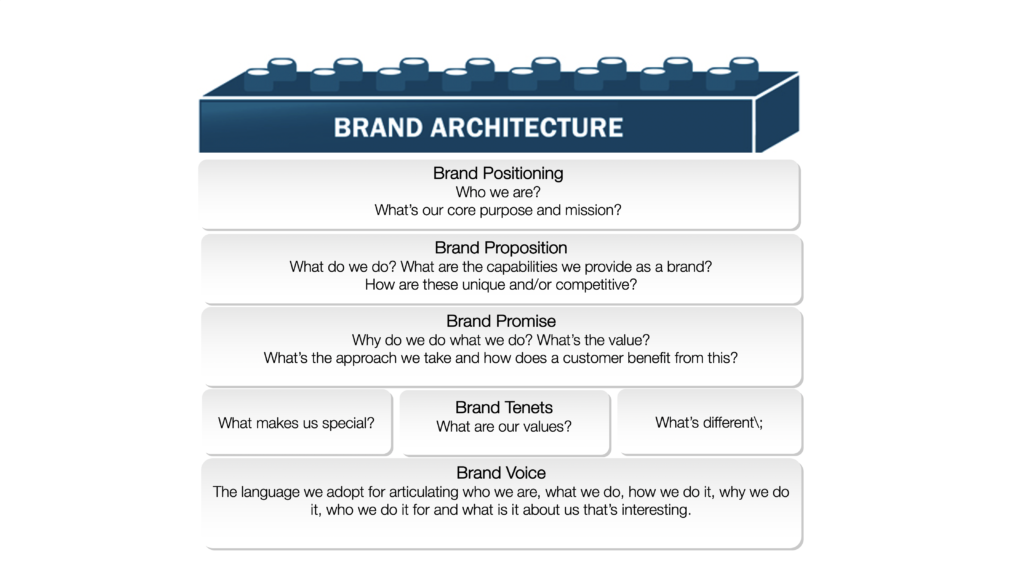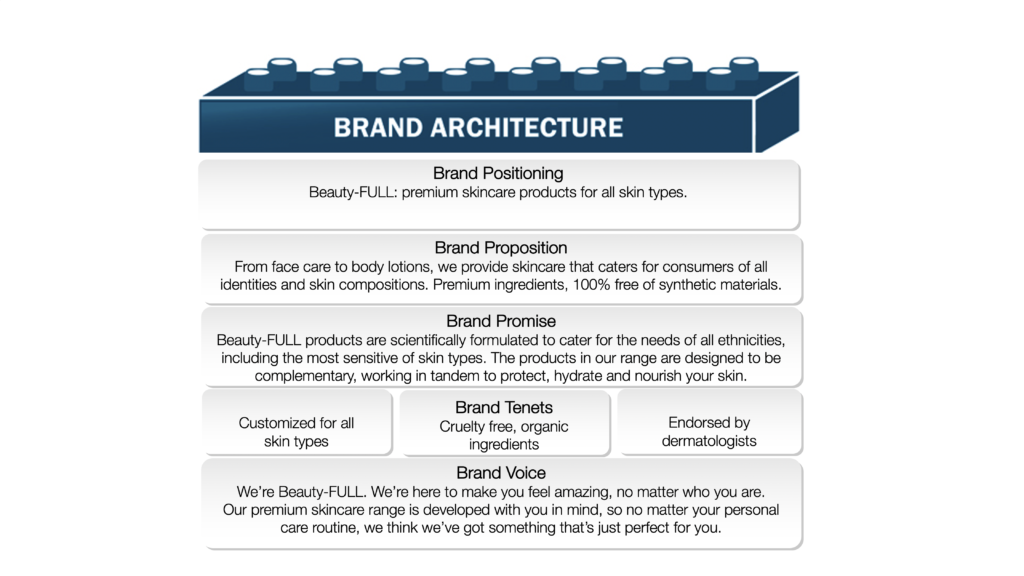There’s a tried and tested brand formula I use when I start any new job. I ask the people who are part of my onboarding to describe what the company does in under a minute. I do this because; a) it’s a fun exercise, and b) it helps me gauge the vernacular employees use to articulate the brand’s core proposition.
Why so?
In the best examples I’ve encountered, the outputs are enlightening and a great way to help me shortcut getting my company lingo grounded. Worst case, you’ll find yourself listening to a hodgepodge of messaging that has no common thread and calls for an immediate back-to-basics approach.
It’s an important exercise for any new marketing leader, as it helps identify if there’s a need to harmonize the brand’s messaging into a consistent and a unified brand voice across the entire company. If you’re an entrepreneur who’s getting ready to launch a new brand, it functions as a storyboard you can use to quickly describe what you do and how you do it.
Regardless of where you are in that readiness spectrum, this post aims to introduce you to a simple brand architecture framework that’s easy to adopt and can be customized to your own offering.
Defining your brand’s architecture
In its simplest form, the function of brand marketing is to facilitate a clear, consistent, and memorable experience for consumers across all touchpoints (digital, offline, packaging, point-of-sale display, etc.). I would describe brand architecture as the messaging framework a company uses to create that common experience.
The analogy I often use is equating your brand architecture to a building blueprint; you would never attempt to build a structure without a defined blueprint for construction purposes, and the same applies to how you build a brand narrative. It’s a foundational cornerstone everything else flows from, making it a critical component of any successful brand.
Start with your ‘Why’
Building a cohesive messaging framework requires carving-out answers to some fundamental questions about your brand. I call this the process of defining your ‘Why’s’. It’s essential to helping define and articulate the most important characteristics of your brand, including the purpose, values, and motivations that are the driving force behind your business.
To achieve this, start by asking yourself a series of simple questions and record these down for later use as inputs into your brand architecture:
Why am I doing this?
Why is it important?
Why would a customer care?
Why is it interesting/special/unique?
Why should a customer pay for this?
Why this and not something else?
When you’re starting out, eager to get your product out the door and into the hands of customers, you may not think defining your core brand is an immediate priority. But it matters. Far from being an after-thought, getting to the essence of why you’re doing what you’re doing is critical to building an authentic brand identity.
In fact, according to Sprout Social Insights, 77% of customers are more likely to increase their spending with brands they feel connected to, highlighting the importance of having a brand narrative that is equal parts relatable, appealing, and authentic.
Who, What, Why, How?
Once you’re able to determine the core purpose of your brand, you should have the inputs you need to develop a compelling brand story that resonates with your target audience. For this, you’ll be using a simple framework to outline the foundational elements of your brand architecture.
Using a hierarchical structure, you’ll aim to answer questions in a sequential order that when put together, will create the narrative storyboard for your brand:
Brand Positioning (who we are)
Brand positioning refers to the way a brand presents itself to consumers relative to the market. It should be a simple, one sentence description of who you are and the mission of your brand. I would encourage you to include your brand name alongside a short and sharp introduction that helps a customer identify your brand’s primary focus.
Brand Proposition (what we do)
What does your brand do? Once you’ve identified who you are as a brand persona, you need to define the unique value proposition of your brand, including what problem you’re solving and the key attributes that make your product/service special.
Brand Promise (why we do it)
A brand promise is a statement or declaration you communicate to customers about what they can expect from your product/service. Think of it as a pledge that sets expectations for the quality, value, and experience customers will receive when interacting or purchasing from the brand, and why this should matter to them.
Brand Tenets (how we do it)
Brand tenets are a combination of the primary differentiators of your brand vis-à-vis competitors, while also outlining the functional, emotional, and/or symbolic benefits to customers. It’s how you communicate the values essential to your brand’s identity and the main reason why customers should choose your offering over others.
And lastly, there’s your brand voice. It is the distinctive personality you use to express the brand’s core identity in a consistent and cohesive voice. It encompasses multiple dimensions specific to your brand. For example, are you a youth brand versus a B2B brand? Is your product something playful, or mission critical to how a business may secure their assets? Does your audience require a more formal tone, or can you get away with language that’s more conversational or colloquial? Your brand voice will be developed through a combination of these factors, plus other aspects such as the markets you sell to, the competitive landscape and your channel strategy to name a few.
A mock case study: Beauty-FULL
To further illustrate the framework in action, let’s examine Beauty-FULL, a fictional skincare brand I created for this exercise.
Brand Positioning
In this example, Beauty-FULL we describe ourselves as a premium skincare brand designed for all skin types. There’s no second guessing what the brand is all about; you’re being introduced to a premium personal care brand, that caters for consumers of different skin compositions.
Brand Proposition
The brand proposition reinforces this again, talking about the mission to be an inclusive brand (e.g. all gender identities, all ethnicities, all skin types, etc.). We’re further establishing what we do, by highlighting the range of products the brand offers, which covers an individual’s entire beauty care regime from face care to body care. There’s also reinforcement of what makes us differentiated as a brand, highlighting the commitment to premium ingredients that are free of man-made materials.
Brand Promise
When describing the experience of using Beauty-FULL, there’s additional emphasis on some of the key points previously mentioned. In the context of defining one’s brand promise, reinforcement through repetition is a good strategy. Additional benefits to the consumer are being introduced such as the scientific formulation process, which considers the specific needs of different skin types. There’s some marketing of the product range to encourage thinking about the portfolio as a complementary set of products that should be purchased and used together. And lastly, there’s the promise of why the brand exists (i.e. to protect, hydrate and nourish the skin), which is the ideal benefits message for a skincare brand.
Brand Tenets
The brand tenets use 2-3 key points to anchor the brand’s differentiated characteristics as part of a memorable storyboard; it’s for everyone, we don’t test on animals and only use organic materials in the manufacturing process, and we’ve got the thumbs up from medical experts.
Finally, the brand voice offers an indication of the sort of tone and language consumers can come to expect—be it across product packaging, ads, in-store displays or otherwise. Here, the tone of voice is friendly, intimate, and empowering. There’s an example of a word play inferring that when you use Beauty-FULL products, you will feel beautiful no matter who you are. This works in the context of the brand proposition, which is all about making customers feel good about themselves from head to toe.
Take action
Your brand architecture is an effective tool in helping you establish a strong brand identity that increases brand awareness, loyalty, and sales over time. It enables you to differentiate from competitors and connect with your target audience in a meaningful way that builds loyalty and long-term brand equity.
Get in touch if you have a project and need some assistance with building your brand identity.